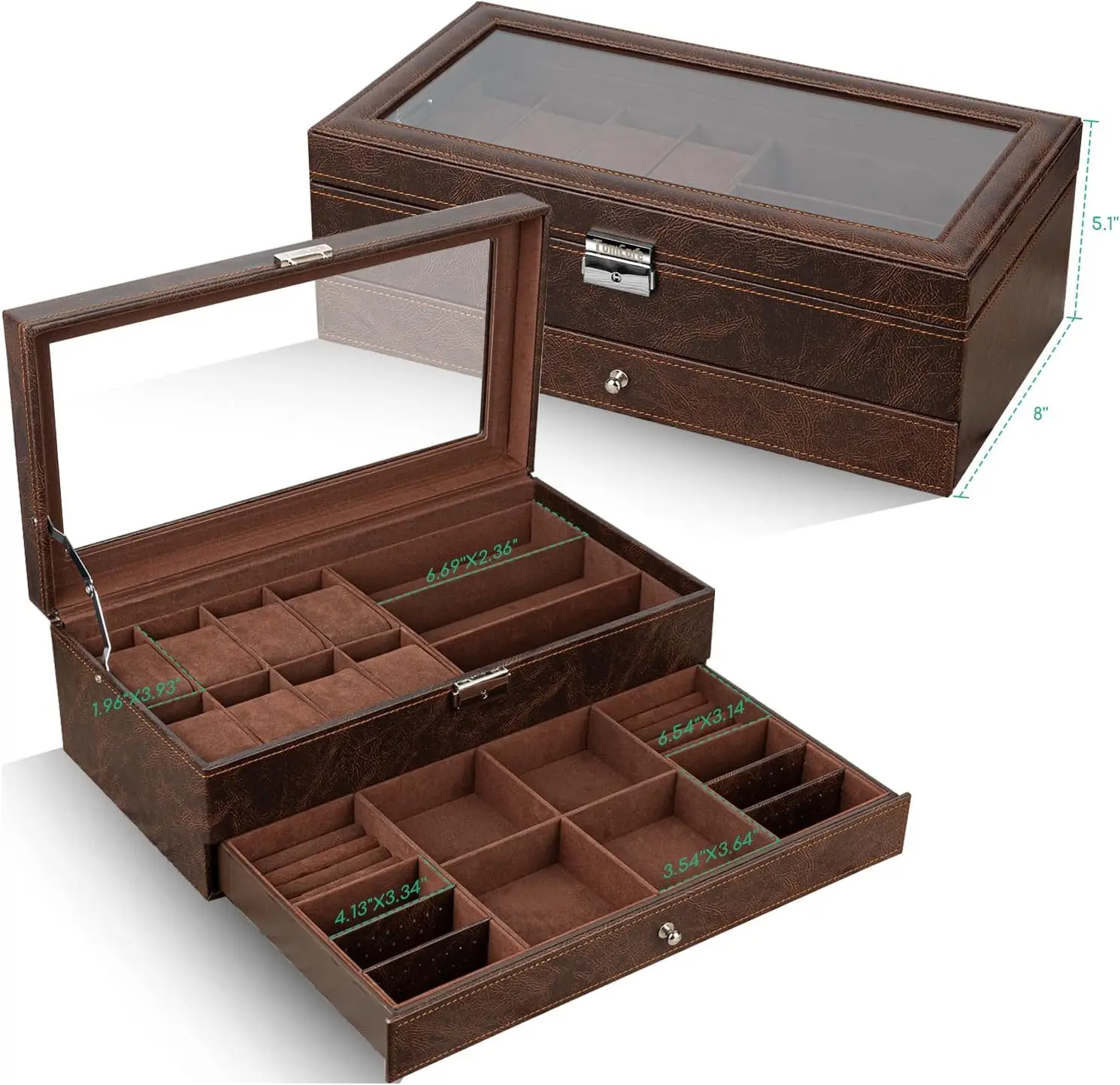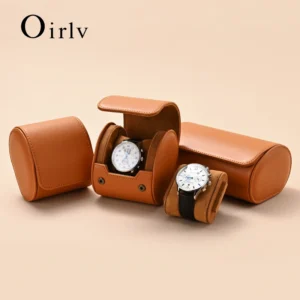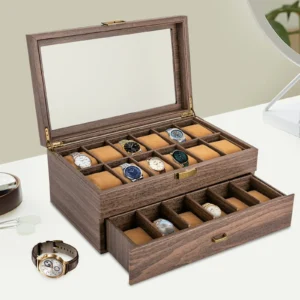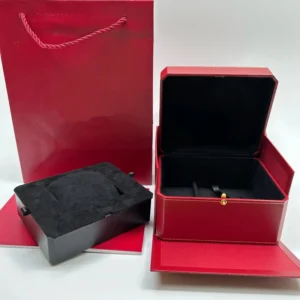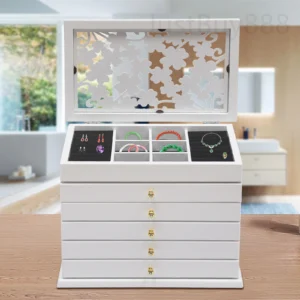Introduction: Understanding the Material Impact on Watch Case Longevity
When investing in quality timepieces, the durability of watch cases—whether the actual watch bodies or storage solutions—becomes a crucial consideration. The materials used directly influence how long these items will maintain their functionality and appearance over years of use.
Both wood and leather represent popular choices for watch enthusiasts, each offering distinct advantages and challenges when it comes to longevity. Understanding these differences helps collectors make informed decisions that align with their specific needs and lifestyle.
When we talk about durability in the context of watch cases, we’re considering several key factors:
- Resistance to physical damage (scratches, dents, impacts)
- Protection against environmental factors (moisture, humidity, temperature)
- The natural aging process and how it affects appearance and function
- Maintenance requirements for preserving quality
The growing trend toward alternative materials in watchmaking has sparked renewed interest in how these natural materials perform over time. Before making an investment in either wood or leather watch cases, understanding the process of choosing wood and leather watch boxes provides essential context for evaluating long-term performance.
Wood Watch Case Construction and Durability Factors
The type of wood used in watch case construction significantly impacts its overall durability. Different hardwoods offer varying levels of natural resilience:
Hardwood Selection and Hardness Ratings
The Janka hardness scale—which measures resistance to denting and wear—provides a reliable indicator of wood durability:
- Ebony: Exceptional hardness (3,220 Janka) with excellent scratch resistance
- Maple: Strong and dense (1,450 Janka) with good impact resistance
- Walnut: Moderate hardness (1,010 Janka) with beautiful aging characteristics
- Bamboo: Technically a grass but comparable to hardwoods (1,380 Janka) with natural flexibility
Stabilization Techniques
Modern wooden watch cases often undergo specialized stabilization processes to enhance durability:
- Resin infusion: Fills wood’s microscopic pores to increase water resistance
- Pressure treatments: Compresses the wood structure for greater density
- Cactus juice stabilization: Creates extremely durable, moisture-resistant wood
Protective Finishes
The application of quality finishes significantly extends wooden case lifespans:
- Lacquer coatings provide excellent scratch protection
- Natural oils enhance water resistance while allowing the wood to breathe
- CA glue finishes create extremely hard, water-resistant surfaces
Quality construction methods, particularly in joinery techniques like dovetail or finger joints, further enhance structural integrity. Understanding these benefits of wooden watch storage helps explain why well-crafted wooden cases often outlast expectations. For those seeking quality options, browsing wooden watch boxes reveals how these durability factors translate into practical storage solutions.
Leather Watch Case Materials: Types and Construction Quality
While leather rarely serves as the primary material for watch bodies themselves, it dominates in watch straps and storage solutions. The grade of leather used dramatically affects durability:
Leather Grade Comparison
- Full-grain leather: The highest quality with intact natural grain, developing a rich patina over time while maintaining structural integrity
- Top-grain leather: Slightly thinner with minor surface imperfections removed, balancing durability with softness
- Genuine leather: Lower quality with weakened fiber structure, more prone to premature wear
- Bonded leather: Composed of leather scraps bound with adhesives, typically the least durable option
Tanning Methods and Durability
The leather preparation process significantly impacts longevity:
- Vegetable tanning: Uses natural tannins for a firm, gradually softening leather that develops character over time
- Chrome tanning: Creates more immediately supple leather with enhanced water resistance
- Combination tanning: Blends techniques for balanced properties
Construction Quality Indicators
Beyond the leather itself, construction details predict durability:
- Stitching density and thread quality prevent separation at stress points
- Edge finishing techniques prevent fraying and delamination
- Reinforcement at corners and high-wear areas extends useful life
Hardware quality—including hinges, clasps, and zippers—often represents the first failure point in leather cases, regardless of the leather quality. Understanding premium leather watch box features helps identify construction elements that contribute to longevity. Exploring leather watch boxes reveals how these durability factors manifest in actual products.
Physical Resistance: Impact, Scratches and Daily Wear
How materials withstand everyday use determines their practical longevity. Both wood and leather handle physical challenges differently:
Scratch Resistance Comparison
| Material | Scratch Resistance | Scuff Resistance | Repair Difficulty |
|---|---|---|---|
| Hardwood (with finish) | High (7-9/10) | Moderate (5-7/10) | Moderate |
| Softwood | Low-Moderate (3-6/10) | Low (2-4/10) | Moderate |
| Full-grain leather | Moderate (5-6/10) | High (7-8/10) | Low |
| Genuine leather | Low (3-4/10) | Low (3-4/10) | High |
Hardwoods with quality finishes generally resist scratching better than most leather grades, but leather—especially full-grain—has superior resistance to scuffs and often shows fewer visible marks from daily handling.
Impact Resistance
Wood and leather respond differently to impacts:
- Wood: Provides rigid protection but can crack or split under severe impact
- Leather: Offers cushioning through flexibility but provides less structural protection
Surface Treatment Effects
Surface treatments significantly modify natural durability properties:
- Lacquered wood surfaces resist scratches but may chip when impacted
- Oiled wood shows scratches more readily but can be easily refreshed
- Finished leather develops protective surface patina but may crack if not maintained
- Raw leather absorbs oils from handling, improving flexibility but showing marks more readily
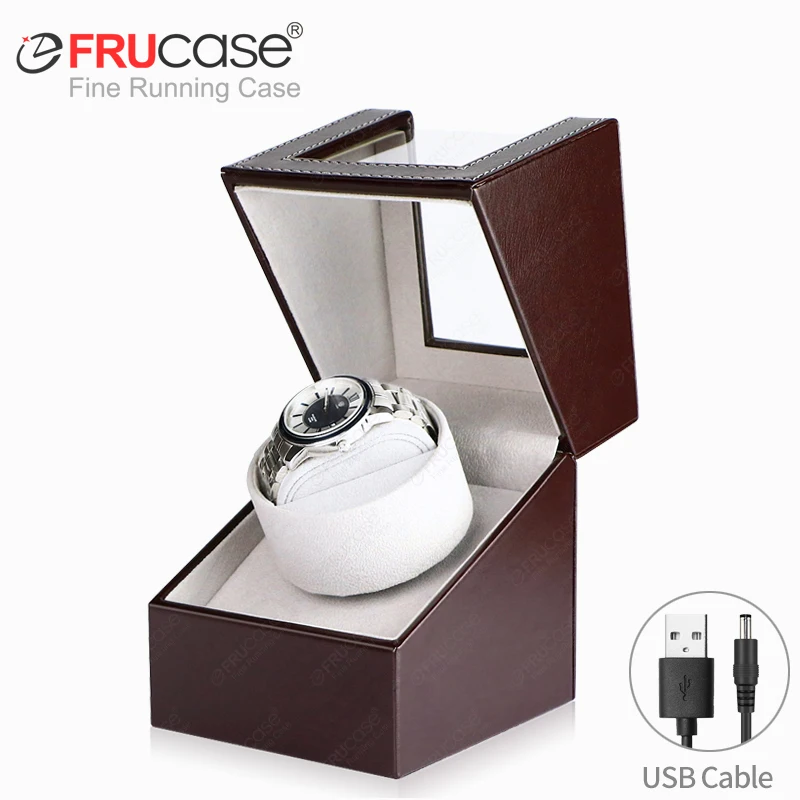
The density of both materials directly correlates with physical durability. Dense hardwoods like ebony and high-quality full-grain leather offer the best resistance to daily wear. For a detailed analysis of how these materials compare in practical use, the wood and leather watch box comparison provides valuable insights. Those seeking the most durable options might consider investing in luxury watch boxes that often incorporate the highest-grade materials specifically chosen for longevity.
Environmental Durability: Water, Humidity and Temperature Effects
Environmental factors often determine the effective lifespan of natural materials like wood and leather:
Water Resistance
• Treated Wood
– Properly finished wood can resist brief water exposure
– Water-resistant finishes provide 20-30 minutes of protection against spills
– Prolonged exposure leads to swelling and potential warping
– Complete submersion typically causes irreversible damage
• Leather
– Naturally somewhat water-resistant but not waterproof
– Treatments can improve short-term water resistance
– Absorbs water over time, potentially causing staining and shape distortion
– Recovers better than wood if properly dried and conditioned after wetting
Humidity Effects
Both materials have optimal humidity ranges:
- Wood thrives in 40-60% relative humidity
- Leather performs best in 50-55% relative humidity
Outside these ranges:
– Low humidity causes wood to contract and potentially crack
– High humidity causes wood to expand and potentially warp
– Low humidity makes leather brittle and prone to cracking
– High humidity can promote mold growth on leather surfaces
Temperature Sensitivity
Temperature fluctuations affect both materials:
– Wood expands and contracts with temperature changes, potentially loosening joints
– Extreme heat can cause finishes to bubble or separate from wood
– Leather becomes stiff in cold conditions and more susceptible to cracking
– Heat accelerates leather drying and can cause irreversible shrinkage
Understanding how to properly protect leather watch cases from moisture can substantially extend their useful life, as water damage represents one of the most common causes of premature deterioration for both materials.
Aging Process: Patina Development vs. Deterioration
The way materials age dramatically affects their long-term appeal and functionality:
| Wood Aging | Leather Aging |
|---|---|
| Color deepens naturally | Develops rich patina with use |
| Grain pattern becomes more pronounced | Becomes more supple over time |
| Finishes may dull or develop character | Absorbs oils from handling |
| Potential for fine cracking with age | Risk of drying and cracking without care |
Desirable Aging vs. Deterioration
Not all changes that occur with age reduce value:
Wood Desirable Aging:
– Richer color development
– Enhanced grain visibility
– Subtle finish patination
Wood Deterioration:
– Splitting or cracking
– Joint separation
– Finish deterioration
Leather Desirable Aging:
– Development of rich patina
– Increased suppleness
– Character marks from use
Leather Deterioration:
– Cracking from dryness
– Color fading from UV exposure
– Structural weakness at stress points
The timeline for these changes varies significantly based on quality. Premium woods might develop attractive aging characteristics over 5-10 years while maintaining structural integrity for decades. Similarly, high-quality leather develops an appealing patina within 1-2 years while potentially remaining structurally sound for 10-15 years or more with proper care.
The initial quality of materials profoundly influences this trajectory—premium materials age gracefully while inferior ones simply deteriorate. For those looking to maintain their leather storage items, understanding techniques for preserving leather watch storage can help promote desirable aging while preventing deterioration.
Maintenance Requirements and Longevity Impact
Proper maintenance dramatically extends the useful life of both wood and leather watch cases:
Wood Maintenance Essentials
- Cleaning: Dust with soft cloth weekly; clean with specialized wood cleaner monthly
- Conditioning: Apply quality wood conditioning oil every 3-6 months
- Environmental control: Maintain moderate humidity (40-60%) and avoid direct sunlight
- Refinishing: Re-apply protective finish every 3-5 years depending on wear
Leather Maintenance Essentials
- Cleaning: Wipe with slightly damp cloth monthly; clean with leather cleaner quarterly
- Conditioning: Apply leather conditioner every 2-4 months
- Protection: Use leather protectant spray every 6 months
- Storage: Keep in moderate humidity away from direct light when not in use
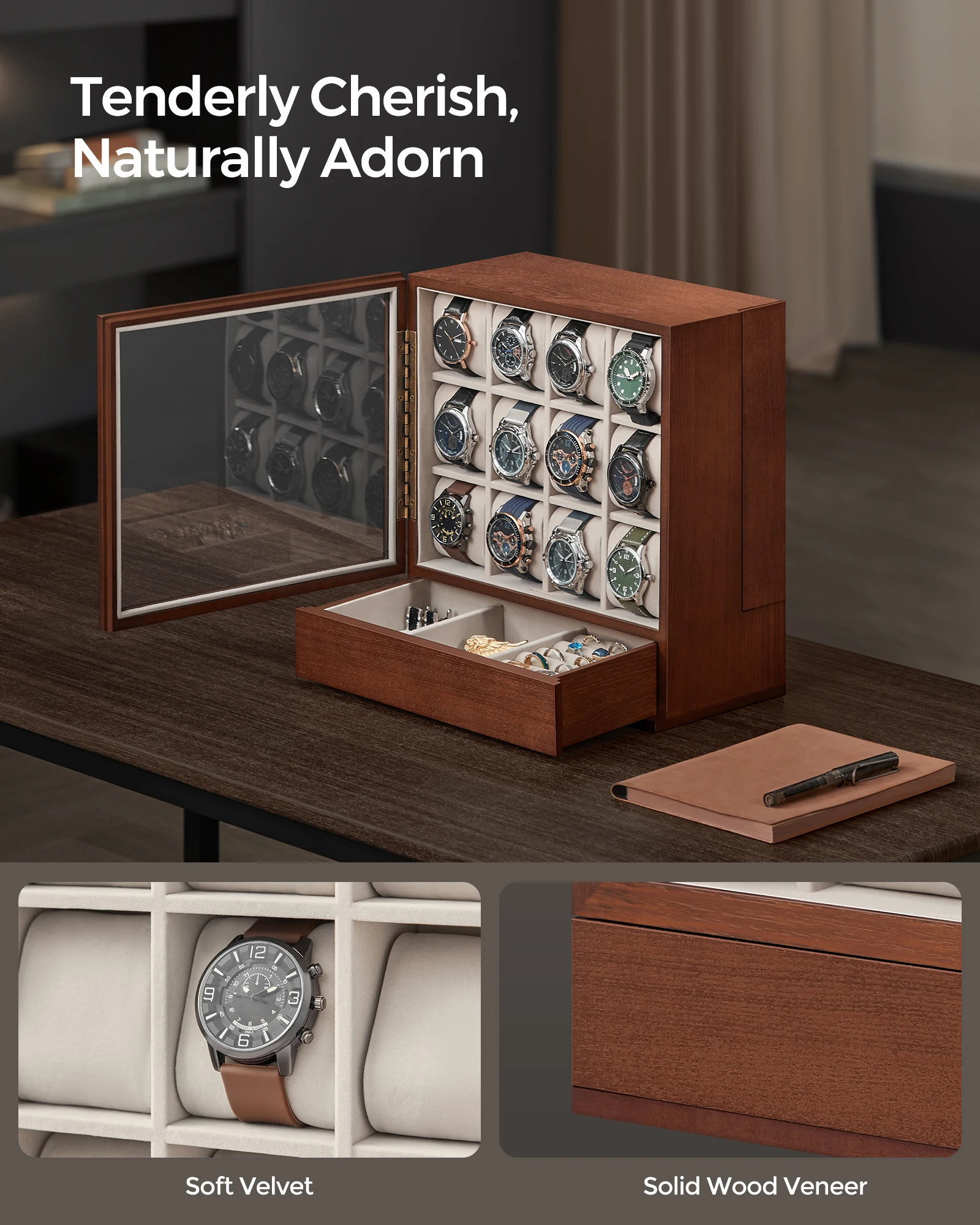
Consequences of Neglect
Without proper maintenance:
– Wood develops fine cracks, loses luster, and becomes more susceptible to damage
– Leather dries out, cracks, and loses structural integrity
The good news? Both materials respond well to restoration efforts if damage hasn’t progressed too far. Refinishing wood can address surface issues, while leather conditioning can revitalize moderately dried leather.
For those seeking detailed guidance, comparing the maintenance requirements for wood and leather cases helps develop an appropriate care routine. Proper storage systems like quality watch display cases can also minimize environmental stress on both the cases and the watches themselves.
Common Failure Points and Vulnerabilities
Understanding typical failure patterns helps predict and prevent issues before they compromise your watch case:
Wood Failure Points
- Joinery areas: Where separate pieces connect, especially in cases with moving parts
- Thin sections: Areas with minimal thickness that may crack under stress
- Finish boundaries: Where different finish applications meet, creating weak points
- Hardware mounting points: Where metal components attach to wood
Wood typically shows warning signs before catastrophic failure:
– Fine cracking around joints
– Slight warping or unevenness
– Loose-feeling hinges or hardware
Leather Failure Points
- Stitching lines: Thread deterioration leads to structural failure
- Fold points: Repeated bending creates stress that eventually breaks leather fibers
- Edge areas: Often the first to show wear and fraying
- Stress points around hardware: Metal components can cut into leather over time
Leather typically exhibits these warning signs:
– Cracking or flaking finish
– Excessive dryness or stiffness
– Thread discoloration or loosening
– Stretch marks around stress points
Manufacturing defects significantly impact longevity in both materials:
– Poorly cured wood leads to delayed warping
– Improperly tanned leather deteriorates prematurely
– Inadequate adhesives fail before the materials themselves
Many common issues can be repaired if caught early—wood can be reglued or patched, while leather can often be restored with conditioning or professional repair.
Watch Accessories, Watch Holder
$94.51 Select options This product has multiple variants. The options may be chosen on the product pageLuxury Watch Boxes, Men's Watch Boxes, Single Watch Box
Price range: $903.35 through $980.97 Select options This product has multiple variants. The options may be chosen on the product pageSingle Watch Travel Case, Watch and Jewelry Box, Watch Roll Travel Case
Price range: $93.44 through $140.65 Select options This product has multiple variants. The options may be chosen on the product pageMen's Watch Organizer, Watch Display Case, Watch Organizer
Price range: $112.68 through $169.45 Select options This product has multiple variants. The options may be chosen on the product pageLuxury Watch Boxes, Luxury Watch Travel Case
Price range: $200.33 through $224.57 Select options This product has multiple variants. The options may be chosen on the product pageWatch and Jewelry Box, Watch Drawer Organizer
Price range: $181.91 through $233.38 Select options This product has multiple variants. The options may be chosen on the product page
Complete Durability Comparison: Side-By-Side Analysis
This comprehensive comparison helps identify which material might best suit your specific needs:
| Durability Factor | Wood Performance | Leather Performance | Winner |
|---|---|---|---|
| Scratch Resistance | 8/10 (with proper finish) | 6/10 (varies by grade) | Wood |
| Impact Resistance | 6/10 (brittle but protective) | 8/10 (absorbs shock) | Leather |
| Water Resistance | 5/10 (with treatment) | 4/10 (with treatment) | Wood (slightly) |
| Humidity Tolerance | 6/10 (stable when properly finished) | 5/10 (susceptible to mold) | Wood |
| Temperature Stability | 7/10 | 6/10 (becomes brittle in cold) | Wood |
| UV Resistance | 5/10 (fades over time) | 3/10 (significant fading) | Wood |
| Expected Lifespan | 15-25+ years | 10-20 years | Wood |
| Repairability | 7/10 (refinishable) | 6/10 (limited restoration) | Wood |
| Maintenance Ease | 6/10 (less frequent) | 5/10 (more frequent) | Wood |
Expected Lifespan Ranges:
– Premium Wood Cases: 15-25+ years with proper care
– Basic Wood Cases: 5-10 years
– High-Quality Leather: 10-20 years with regular maintenance
– Basic Leather: 3-7 years
For the most detailed analysis of material performance over time, exploring the differences between wood vs. leather watch storage provides valuable insights for collectors making long-term investments in their timepiece collection.
Which Material Best Suits Your Lifestyle?
Your personal circumstances and preferences should guide your choice between wood and leather watch cases:
Activity Level Considerations
Active Lifestyle:
– Leather offers better shock absorption for on-the-go protection
– Reinforced leather travel cases withstand movement and impacts
– Consider water-resistant treatments if outdoor activities are common
Office/Home Use:
– Wood provides superior scratch protection for stationary storage
– Wooden display cases offer better structural protection
– Less concern about impact resistance when movement is minimal
Climate Factors
Humid Environments:
– Choose woods like teak or cedar with natural moisture resistance
– Select vegetable-tanned leather with anti-fungal treatments
– Both require more frequent maintenance in high humidity
Dry Climates:
– Wood benefits from occasional oiling to prevent cracking
– Leather needs regular conditioning to prevent drying
– Incorporate humidity control in storage areas
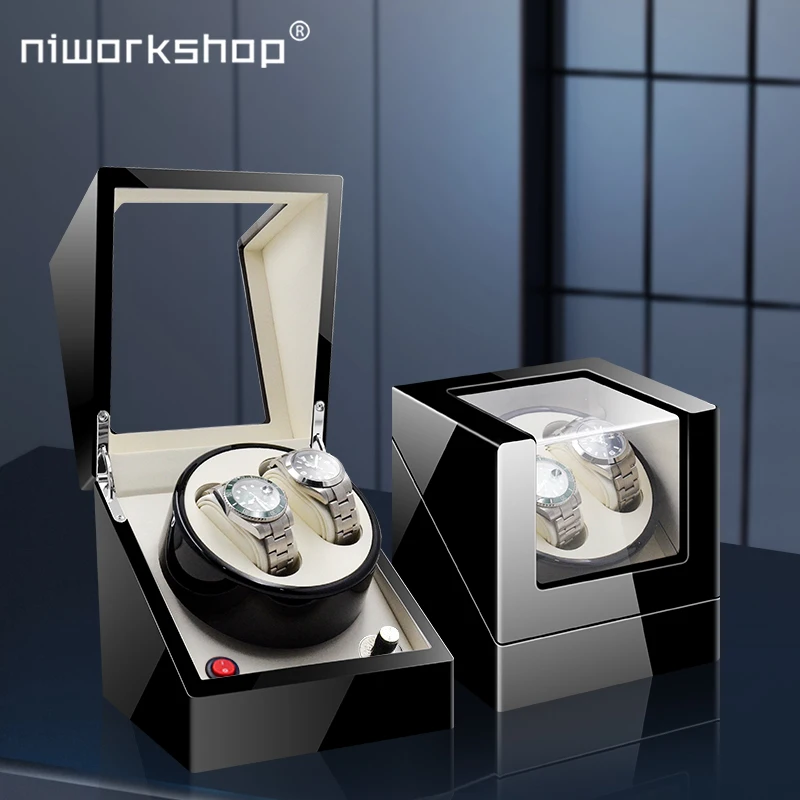
Maintenance Willingness
Minimal Maintenance Preference:
– High-quality finished wood requires less frequent attention
– Full-grain leather with quality protectant treatments better resists neglect
– Consider automatic watch winders with built-in protection features
Enjoy Regular Maintenance:
– Both materials benefit from regular care
– Leather responds visibly to conditioning routines
– Wood develops deeper character with proper maintenance products
Understanding how to choose wood and leather watch cases based on these lifestyle factors ensures your selection aligns with both your practical needs and aesthetic preferences. For those with specific requirements, specialized watch organizers and accessories can complement either material choice.
Premium Watch Storage Solutions: Daily Accents Recommendations
Quality storage solutions significantly extend watch longevity regardless of the watch’s construction materials. Premium storage options incorporate features specifically designed to address the durability challenges of both the storage case itself and the timepieces within:
Key features in quality watch storage solutions include:
- Microfiber or velvet lining to prevent scratches on watch faces and bracelets
- Cushioned slots or pillows that maintain watch shape while preventing movement
- Secure closures that protect against dust and limited environmental exposure
- Properly seasoned woods or quality treated leathers that maintain stability
- Reinforced corners and stress points to extend storage case lifespan
For those with growing collections, modular systems allow expansion without compromising protection. Watch winders incorporate additional technology to maintain automatic watches while keeping them protected in secure environments.
Selecting storage based on your collection size, watch types, and display preferences ensures both proper protection and convenient access. Understanding high-quality materials in premium watch boxes helps identify options that will provide lasting protection for valuable timepieces.
Frequently Asked Questions About Watch Case Durability
Is wood or leather more waterproof?
With proper treatment, wood generally offers slightly better water resistance. However, neither material is truly waterproof without additional synthetic components. Wood with quality lacquer can repel water for 20-30 minutes, while most treated leathers begin absorbing moisture after 10-15 minutes of exposure.
What makes a watch case truly durable?
A truly durable watch case combines quality raw materials, excellent construction techniques, appropriate protective finishes, and design that minimizes stress on vulnerable points. The most durable options also incorporate reinforcement at corners and edges while using proper joinery or stitching methods.
Which types of wood offer the best durability for watch cases?
Hardwoods like ebony, rosewood, walnut, and maple provide excellent durability. Ebony offers superior scratch resistance, while maple provides good impact protection. Exotic hardwoods typically outperform domestic varieties in durability metrics. Exploring best wood watch boxes reveals how specific wood species translate to practical durability.
How does the lifespan of a wooden watch compare to traditional metal watches?
Quality wooden watches typically last 7-15 years with proper care, while traditional metal watches can last decades or even generations. The difference lies primarily in water resistance and the natural tendency of wood to eventually dry and develop fine cracks. However, wooden watches offer unique aesthetic appeal that many collectors find worth the trade-off.
Can damaged leather watch cases be restored?
Minor to moderate leather damage can often be restored. Conditioning restores flexibility to dried leather, while color restoration products address fading or discoloration. Structural damage like severe cracking or torn stitching requires professional repair. Some premium leather goods services can rebuild damaged sections if the leather quality justifies the investment.

